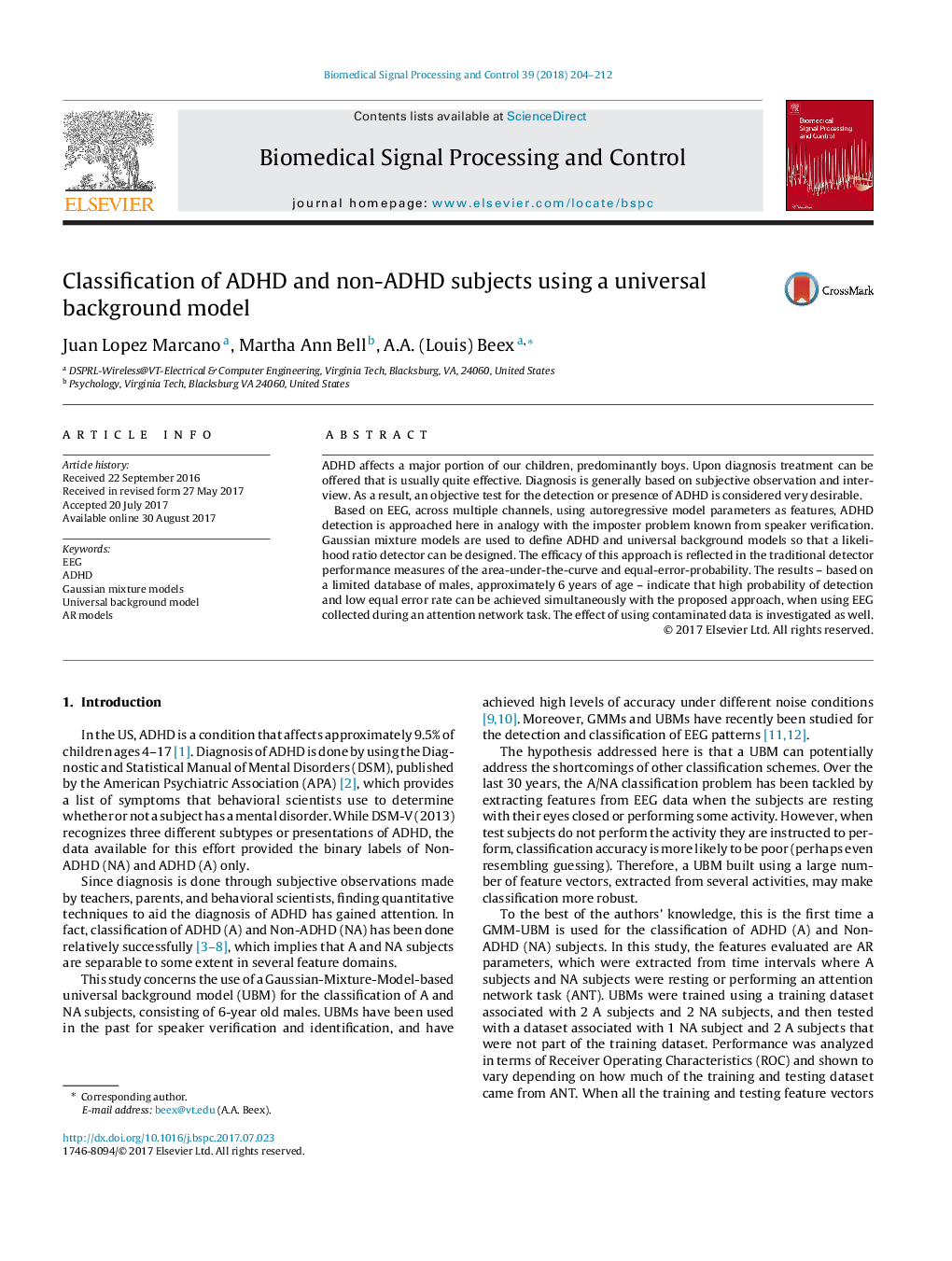| کد مقاله | کد نشریه | سال انتشار | مقاله انگلیسی | نسخه تمام متن |
|---|---|---|---|---|
| 4973479 | 1451641 | 2018 | 9 صفحه PDF | دانلود رایگان |
- Log-likelihood ratio based detection of ADHD.
- Uses EEG during an attention task, not resting EEG with eyes closed.
- Detector performance is good at low equal error rate.
- Approach is not too sensitive to use of mixed data.
ADHD affects a major portion of our children, predominantly boys. Upon diagnosis treatment can be offered that is usually quite effective. Diagnosis is generally based on subjective observation and interview. As a result, an objective test for the detection or presence of ADHD is considered very desirable.Based on EEG, across multiple channels, using autoregressive model parameters as features, ADHD detection is approached here in analogy with the imposter problem known from speaker verification. Gaussian mixture models are used to define ADHD and universal background models so that a likelihood ratio detector can be designed. The efficacy of this approach is reflected in the traditional detector performance measures of the area-under-the-curve and equal-error-probability. The results - based on a limited database of males, approximately 6 years of age - indicate that high probability of detection and low equal error rate can be achieved simultaneously with the proposed approach, when using EEG collected during an attention network task. The effect of using contaminated data is investigated as well.
74
Journal: Biomedical Signal Processing and Control - Volume 39, January 2018, Pages 204-212
